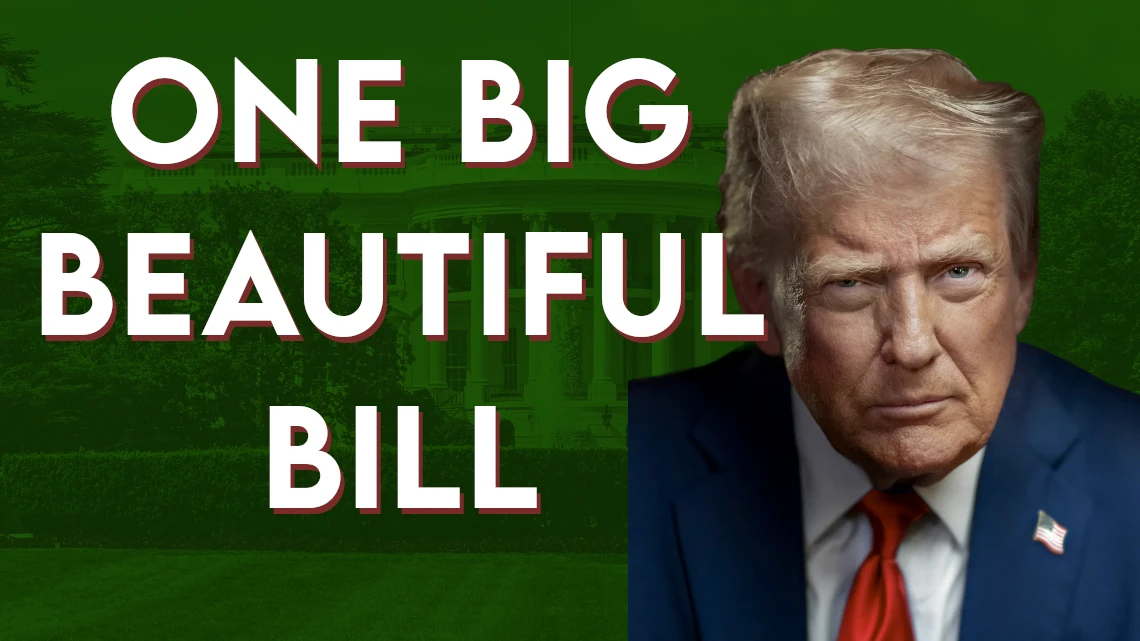
Published on
Written by Mark Christian
Introduction to the One Big Beautiful Bill
If you were on X over the past week, especially the last 24 hours, you would have seen the intense discussion surrounding the One Big Beautiful Bill. However, much of the conversation has been clouded by misinformation, dishonesty, and a lack of understanding. This article explains why the One Big Beautiful Bill is, indeed, a significant and well-crafted piece of legislation.
Discretionary vs. Mandatory Spending
First, let’s clarify the two types of federal government spending: discretionary and mandatory, each with distinct mechanisms for adjustment. Mandatory spending is permanent in law and does not require renewal, such as Social Security. Discretionary spending, what most people associate with government budgets, must be renewed or adjusted during the budget process, covering funds for departments or foreign aid. While the labels may seem arbitrary, the legal processes for adjusting these two types of spending are significantly different.
The Role of Reconciliation in Legislation
Discretionary spending can only be adjusted during the formal budget process. Mandatory spending, however, can also be modified through a process known as reconciliation. Reconciliation allows changes to mandatory programs like SNAP, SSI, Social Security, parts of the Department of Defense, and certain veterans’ benefits. Additionally, reconciliation bills bypass the Senate filibuster. There are two types of filibuster: the speaking filibuster, where a senator speaks indefinitely to delay a vote, and the process filibuster, which requires 60 votes to proceed to a vote on most bills. With the GOP holding 49 reliable votes, four swing moderate votes, and facing 47 Democratic votes, reconciliation’s ability to skip this 60-vote hurdle is a key reason the GOP chose this approach for the One Big Beautiful Bill.
Addressing Conservative Criticisms
This decision caused significant confusion, whether intentional or not. Many conservatives called for cuts to reduce the deficit or fully balance the budget, but these goals are challenging given the GOP’s stance on protecting mandatory spending programs like Social Security. Other programs, such as SNAP and Medicaid, are seeing new restrictions to curb fraud. Another criticism is that the Congressional Budget Office (CBO) claims the bill raises the deficit. However, the CBO, often influenced by Democratic leadership, has a questionable track record—its projection that the Inflation Reduction Act would increase the budget by $23 billion annually proved inaccurate. The CBO’s method of calculating deficit increases assumes a scenario where the GOP does nothing, allowing the 2017 Tax Cuts to expire, thus raising taxes. In reality, the One Big Beautiful Bill cuts approximately $1 trillion in mandatory spending while allocating an additional $150 billion to the Department of Defense for border security, deportations, and related efforts.
Why an Omnibus Bill?
Why did the GOP opt for a large omnibus bill instead of smaller, individual bills, as some promised? Simply put, smaller bills are less effective for achieving significant reforms. If the One Big Beautiful Bill were split into issue-specific bills, each would face the Senate filibuster, requiring approval from seven Democrats plus moderate Republicans like McConnell, Collins, Tillis, and Murkowski. For example, renewing the 2017 Tax Cuts might pass, but funding for ICE and mass deportations, a $40,000 SALT cap, repealing Biden’s Green New Deal tax credits, work requirements for Medicaid, spending reductions, asylum fines, and expanded fossil fuel tax credits would likely fail. By consolidating these into one bill, the GOP ensures that America First priorities have a better chance of passing, especially with slim majorities.
Budget Realities and Senate Constraints
Regarding budget complaints, now is not the time for comprehensive budget fixes. The One Big Beautiful Bill cuts nearly all politically feasible mandatory spending under reconciliation rules. Expecting massive cuts is unrealistic, as the regular budget process is subject to the Senate filibuster, limiting reductions to minor adjustments. The approximately $1 trillion in cuts achieved by the bill represents the maximum achievable given Senate constraints, not a lack of GOP resolve.
The Debt Ceiling Strategy
Another major criticism is the proposed debt ceiling increase. The debt ceiling, set by Congress, limits how much the U.S. can borrow, while the president is obligated to spend what Congress mandates. For instance, if the government has $5 in debt, a $6 debt ceiling, and a $5 budget, the president must spend $5 but can only borrow $1, creating a crisis pinned on the executive. This system gives Congress leverage over the president. A $5 trillion debt ceiling increase, as proposed, prevents House Minority Leader Hakeem Jeffries and moderate Republicans from using the debt ceiling in 2027 or 2028 to demand concessions, such as increased foreign aid or reinstating USAID. Without this increase, future negotiations could weaken Trump’s position.
Comparing to the 2019 Budget
Some advocate returning to the 2019 budget. The One Big Beautiful Bill comes close. The 2019 budget, excluding interest payments, was approximately $4.1 trillion. Adjusted for inflation, this equates to about $5.2 trillion today. The One Big Beautiful Bill projects spending at $5.8 trillion, with $0.15 trillion for border security and deportations and $0.2 trillion in DOGE cuts, leaving roughly $0.25 trillion above the inflation-adjusted 2019 budget. Factoring in tariffs, the bill’s fiscal impact aligns closely with 2019’s.
Conclusion: A Well-Crafted Bill
Here at America First Insight, it’s clear that the One Big Beautiful Bill, meticulously crafted by Speaker Johnson, Majority Leader Thune, Director of the Office of Management and Budget Russ Vought, Deputy Chief of Staff Stephen Miller, and President Trump, is a strong legislative achievement. If you have concerns about the bill, we invite you to propose solutions that can pass the Senate and adhere to reconciliation rules. This bill represents a pragmatic step toward advancing America First priorities in a challenging political landscape.
Related Articles
About the Author
Mark Christian is a writer and Founder of America First Insight. Follow him on X (formerly Twitter).
Stay Updated
Get the latest updates from America First Insight. Subscribe to our newsletter for more political news and insights!